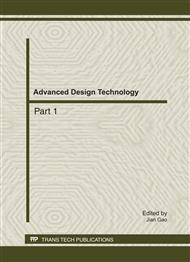p.266
p.273
p.280
p.284
p.288
p.293
p.299
p.303
p.307
Representing the Evolving Design Rationale to Support Design Reuse
Abstract:
Engineering design is an innovative process that relies heavily upon associations to past experience and similar designs. Design rationale (DR) explains why an artifact is designed the way it is. An explicit representation of DR can bring many benefits to understand, modify, or reuse a design. This paper argues that because the design is a cognitive activity continuously iterative and evolving, the conventional argument-based representation of DR has some inherent limitations. An intent-driven representation model is created to capture and formalize the evolving DR. The DR elements and their interactive relationships are defined. Furthermore, two methods to reconstruct the DR model, namely the structure-based clustering and the context-based extraction, are explored to reduce the complexity of the model and to support effective DR traceability for the reuse purpose. Finally, a graphical DR modeling system is developed. And the future research is discussed.
Info:
Periodical:
Pages:
288-292
Citation:
Online since:
August 2011
Authors:
Keywords:
Price:
Сopyright:
© 2011 Trans Tech Publications Ltd. All Rights Reserved
Share:
Citation:


